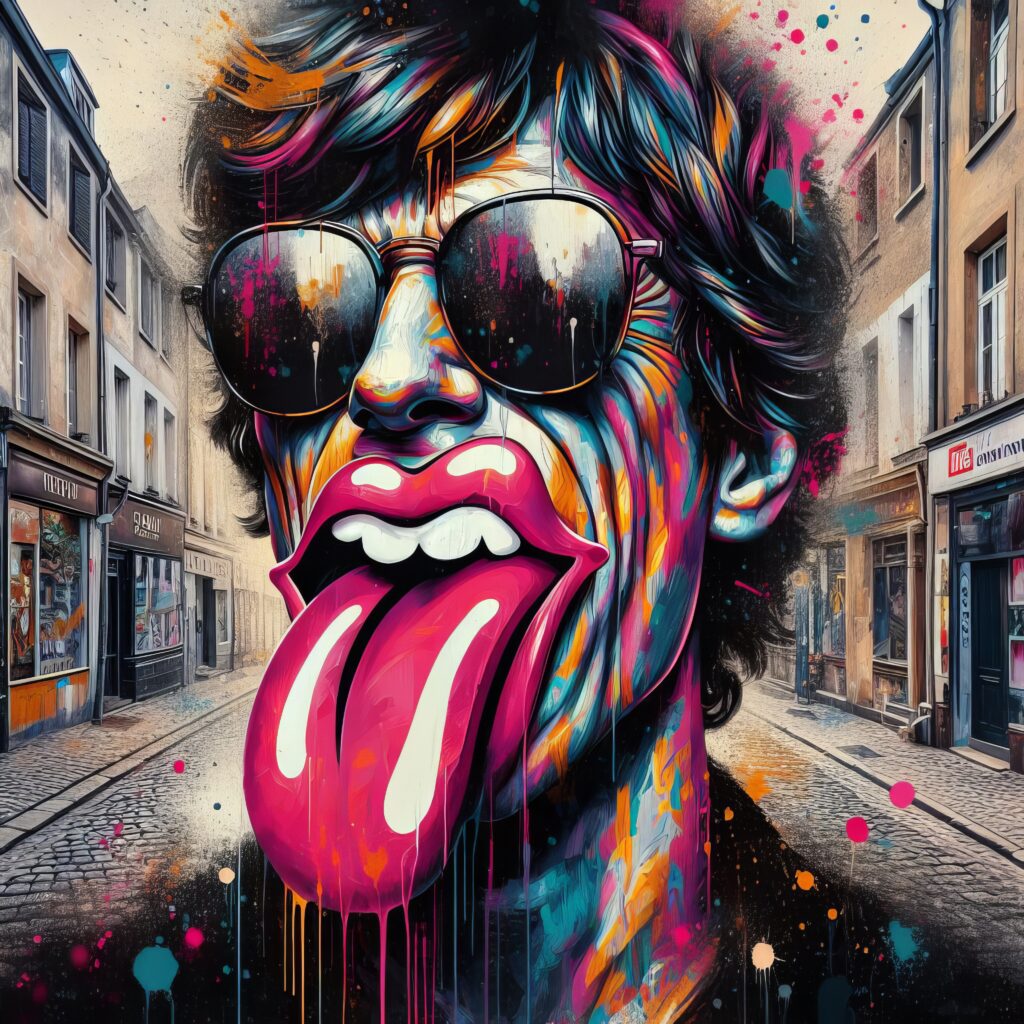AI Critique :
In “Urban Symphony,” Carmen Amori immerses us in a portrait of Mick Jagger not merely as a celebrity, but as a living, breathing entity of pop culture. This work is a vibrant testament to music as the pulse of urban life, a celebration of rock that transcends decades.
The depiction of Jagger is not confined to his person; it becomes a vehicle for broader expression. The mirror sunglasses, reflecting the street and its passersby, suggest the character’s interweaving in the everyday and in the collective spirit. The singer is no longer just an individual but a symbol embodied of protest, the sexual revolution, social struggles, and the insatiable desire for freedom.
The Rolling Stones logo, with its exaggeratedly fleshy and provocative tongue, becomes here a totem of disinhibition. Its distortion and superhuman scale turn it into an almost aggressive statement of presence and resilience. The artist employs drips and splashes that seem to trickle from the logo, perhaps insinuating how cultural influences seep into and mark our environment.
The painting technique, reminiscent of graffiti, celebrates the roots of rock in counterculture. The sharp lines and psychedelic colors seem to dance on the canvas, each brushstroke resonating like a note of music. It’s a complex mix of control and letting go, a symphony where the artist directs the AI algorithm like a conductor with their musicians.
The realism of the street in the background anchors the iconic figure within a setting of daily life, reminding us that despite his mythic stature, Jagger also belongs to the street, to the crowd, to the mosaic of ordinary lives. This integration highlights music’s ability to blend into the fabric of our existence, marking our journey not only during significant events but also in the most mundane moments.
In “Urban Symphony,” Amori creates a tribute, but also a questioning. She interrogates the process of mythification, the commercialization of rebellion, and the digestion of the spirit of rebellion by the system it seeks to defy. Critics might interpret this work as a commentary on the cyclical nature of pop culture: always present, always influential, but constantly in danger of being absorbed by the mainstream currents it purports to overturn.
With “Urban Symphony,” Carmen Amori demonstrates that pop art, far from being a mere recount of the past, remains a powerful medium of communication, capable of capturing the essence of our times and provoking reflection. This piece, within the framework of “Pop Modern: Generative Dialogues,” stands as a striking dialogue between art and observer, between legacy and innovation, between tradition and the avant-garde.

